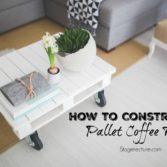Guest Blog Entry #5 – May 24, 2010
In a past blog post we explored the idea of downsizing from the family home. Family of the elderly have to think about lifestyle changes, and so do the people who interact with them. Having your home comfortable and safe for the Aging, is a concept that we don’t consider enough.
Last week, Guest Blogger, Alesha E. Churba of A.E.Churba Design: Simple and Divine Interior Design, gave us ideas for enticing buyers through their senses when home staging. Today, she explains how making your home safe and comfortable for aging individuals is becoming more mainstream, and important.
Aging in Place takes into account the safety and comfort of everyone living or visiting your home. This does not

Design for safety and comfortability
necessarily mean that you have to be a senior yourself. It could be that you have a friend who comes by and you would like your home to be visitable. Maybe you have an aging parent that sometimes visits or an aging relative is going to live in the space with you. Or, perhaps you have become limited physically in some way and you need to make your home more comfortable and livable. All of these reasons and just wanting to prepare for your future are reasons to consider design with Aging in Place principles.
Universal Design:
Aging in Place is an important subject just coming to the forefront of the design and construction industries. Aging in Place is related to Universal Design because it is about adapting your home so that it is accessible and functional to everyone who lives or visits there. Universal Design brings to mind the notion of grab bars and funky, big bathroom stalls but that is just a small part of Universal Design. Universal Design is the idea of making

Universal design can be designed with aesthetics in mind also.
a space as accessible (read easily navigated, intuitive, and easy to figure out) as possible for everyone. The idea of Aging In Place takes this notion and makes it even more personalized to the users of the space, in other words, making your home work for you and your needs.
You have probably noticed that our population is aging: Baby Boomers (born between 1947 and 1964) are entering the stages in their lives where they are considering the future: their future and even their parent’s futures. Maybe you are a Baby Boomer who is becoming your parents caretaker or you are just looking ahead to prepare your home so that you can retire in your home comfortably and safely.
Basic guidelines for evaluation:
Aging in Place takes the concept of comfort and safety into consideration and provides basic guidelines. It should be noted that your living situation is unique to you and can not be evaluated just from this article. There are a few things you can consider as basic design considerations when looking to either re-design your current living situation or evaluate your new living situation.
Some things to look for or consider when evaluating your home for safety and comfort include:
• At least one entrance that is on the level (no steps to navigate).
• The entrance door that will be used should be at least three feet wide.
• The hallways to the main areas like the kitchen, living, bathroom and bedroom areas should be at least three feet wide.
• There should be ample lighting or the ability to add extra lighting in the hallways, kitchen, bathrooms, and living areas.
• A master bedroom and bathroom on the main floor is a great idea or the ability to add one in the future if circumstances require it.

Wide hallways, and master bedroom on the main floors are advantageous
Thinking ahead is your key. Have a plan that will be helpful to everyone of all ages and stages. The more accommodating you make your home, the more comfortable it will be when you are older. Consider the livability and visitability of your home for incorporation in any remodel plans and you will benefit from increased comfort, safety and salability of your home.
TheAARP site has a link to locate a Certified Aging in Place Specialist (CAPS) who can help you specifically with your own home design recommendations. Each family has unique needs and situations that can be evaluated. Those trained in this particular area have extensive knowledge that can help you with your needs. Not all recommendations and Aging In Place modifications require extensive remodeling. Remember that Aging In Place is really about making your home safe and comfortable for you and everyone in your home.
Alesha E. Churba recently completed the CAPS Training and is the only Allied Member ASID (American Society of Interior Designers) with experience in Residential and Commercial Interior Design and Decorating in Southeast Idaho. Her business niche is primarily designing and decorating with her clients futures in mind- i.e. aging in place, color story investment, and designing for the long term safety and comfort of her clients.
For more home solutions ideas on Stagetecture, click here.
Receive Stagetecture's Daily Lifestyle Ideas
FREE - Daily emails with recipes, home decor, D.I.Y, and lifestyle tips! : ) Who doesn't need help?






Is there an existing standard for door widths and hallway widths? What heights should door knobs be, and again, is there a standard height for knobs? Is there any preference as to swing- in or out- and hinge side? Are sliding doors preferable or acceptable? Perhaps these are silly questions, but that’s why consultants such as yourself are valuable to have because most of us never think of these things.
Hi Art! I know what the heights are for ADA, but I don’t know if they are the same for Universal Design. Great questions. I will forward these to Alesha, and post her answers, and email you when I get them. How does that sound?
Art – Here are Alesha’s answers to your questions.
Suggested width for doors is at least 36″ (34″ clear width so knuckles don’t get scraped with a wheelchair) wide to allow for entry. There is no standard in the residential sector- just a suggested width. As for hallways, the FHA (Federal Housing Authority) says 3′ wide but 4 or 5′ would be better. It is easier for those traveling down the hallway, especially if they need help. Standard height for doorknobs is 36″ above the finished floor. Ideally all important things are in the 24-48″ zone for reaching sake is the best. As to the door swinging in or out, it truly depends on if the area has enough space for maneuverability. It takes a 5′ radius to turn a wheelchair all the way around so it would depend on the circumstances as to how the person works and how the room is arranged. Same with the hinge side, it would depend on where things are in relation to the door frame- an example of this is a door opening into a bathroom and it blocks the sink. It would be better to reverse the swing so that the sink is open in front of it.
Sliding doors would be okay as long as they are wide enough to get through (34″ clear) and as long as it doesn’t take a great amount of effort to slide them. There isn’t a rule that says door knobs have to be 36″ off the floor but it is the standard.